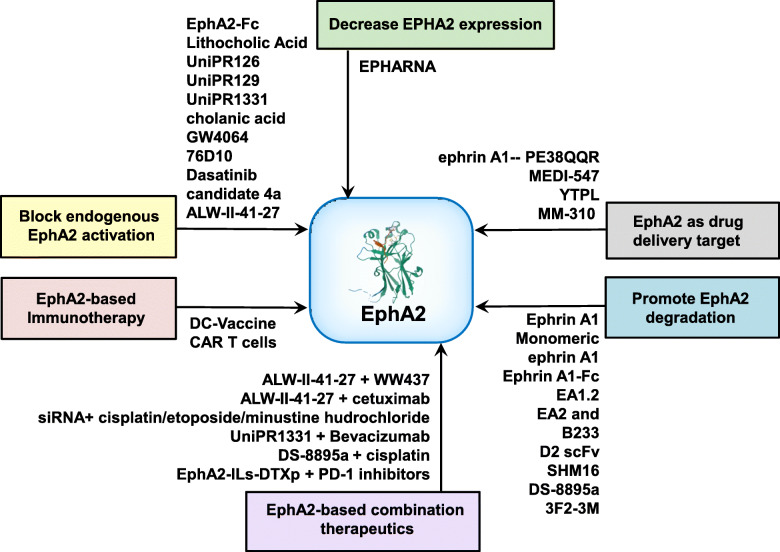Fig. 2.
Expression and biological pathways linked with EphA2. The interaction of cell-membrane-bound EphA2 with ephrin A1 induces forward or reverse signals in the corresponding cells. Under normal conditions, cell–cell contacts allow EphA2 to interact with ephrin A1, which induces EphA2 phosphorylation and activates its downstream signaling. Tyrosine phosphorylation of EphA2 promotes the generation of a complex with c-Cbl, subsequently induces EphA2 degradation. This leads to suppression of ECM attachment, cell proliferation, cell migration, and angiogenesis. In the malignant state, loss of cell–cell contacts induces receptor-ligand interaction and degradation of EphA2. In addition, tyrosine phosphorylation of EphA2 could be rapidly reversed by the phosphatase LMW-PTP, further leading to the overexpression and accumulation of unphosphorylated form of EphA2. This leads to promotion of ECM attachment, cell proliferation, cell migration, and angiogenesis

